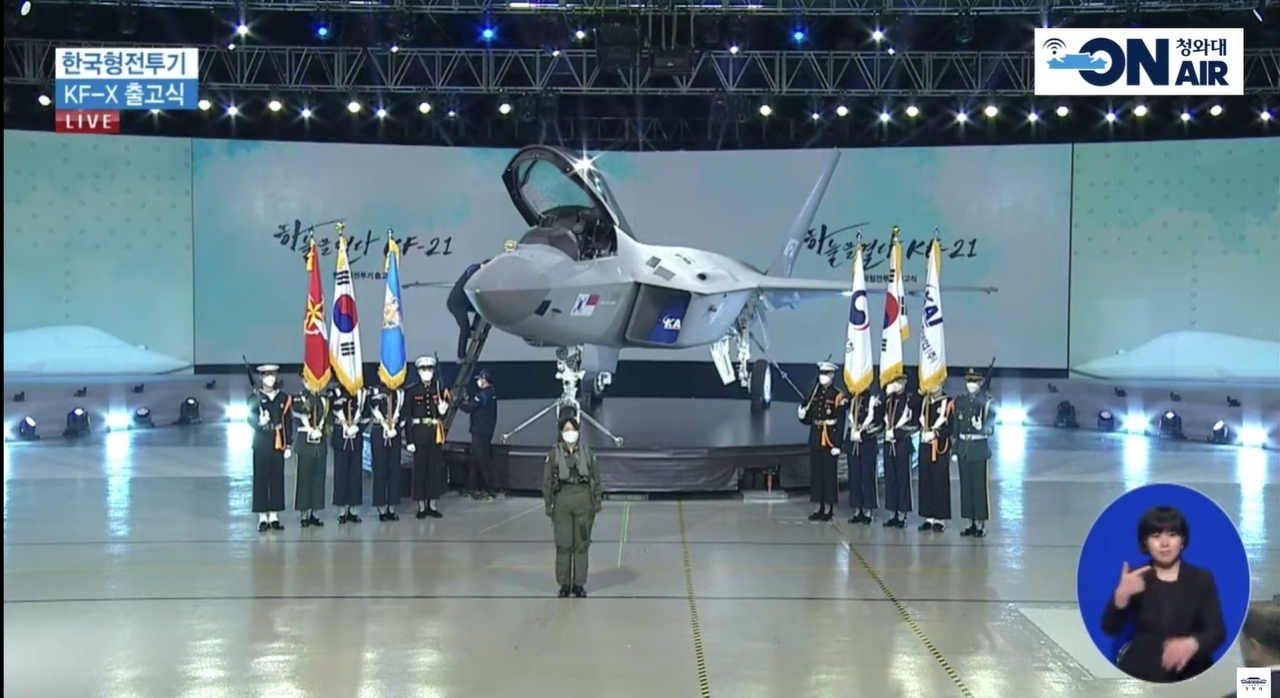 |
Korea Aerospace Industries on Friday rolls out the KF-21 Boramae, the first prototype of the KF-X project, at its manufacturing facility in Sacheon, South Gyeongsang Province. (Cheong Wa Dae) |
At a commencement ceremony of the Korea Air Force Academy on March 20, 2001, late President Kim Dae-jung made a promise to the cadets, “We’ll let you cadets ride fighter jets developed by Korea.”
The seed planted by Kim came to fruition two decades later. KF-21 Boramae, the country’s first prototype of a domestically developed fighter jet, was unveiled Friday at a rollout ceremony at Korea Aerospace Industries’ manufacturing facility in Sacheon, South Gyeongsang Province.
Officially christened the KF-X project and launched in 2016, it was the country’s single largest defense undertaking worth 8.8 trillion won ($7.8 billion).
“A new era of independent defense has begun, and it’s a historic milestone in the development of the [South Korean] aviation industry,” President Moon Jae-in said at the rollout, stressing that the country would be among the only eight countries in the world that produced their own supersonic jet fighters, if KF-21 Boramae successfully completes test flights.
Moon also paid tribute to the technicians of KAI, the nation’s sole aircraft manufacturer who led the KF-X project.
“From its design to production, Korean technicians led all stages of the development of KF-21. In this process, Korea localized key equipment essential for a 4.5-generation fighter such as active electronically scanned array, or AESA radar,” a Cheong Wa Dae official said.
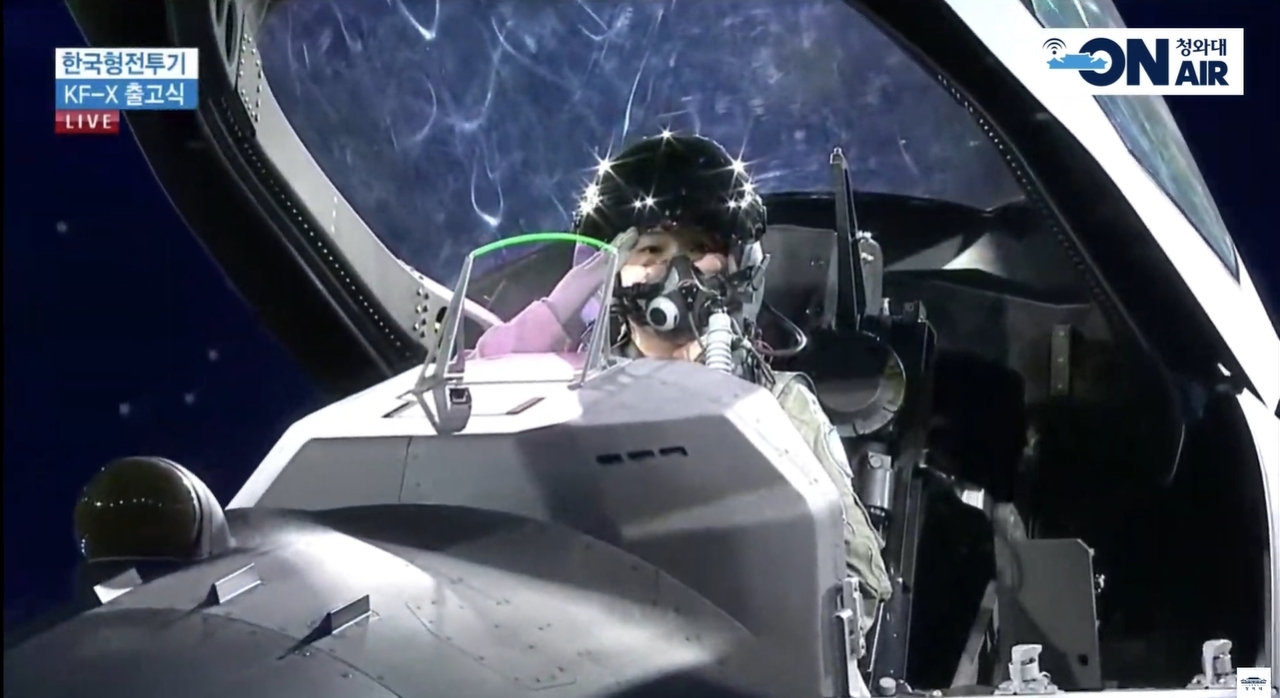 |
Korea Air Force Capt. Yang Yoon-young, the first pilot of the KF-21, salutes from the cockpit. (Cheong Wa Dae) |
It was not an easy undertaking.
“When a program director of Lockheed Martin first looked at the timeline of KF-X project, the official said that the project would need a miracle to succeed,” said Ryu Kwang-su, head of KAI’s aircraft program division, during an interview with The Herald Business, the Korean-language sister paper of The Korea Herald.
It took Lockheed Martin almost 20 years and at least $59.2 billion to develop F-35 fighter jets. KAI, which embarked on the project in January 2016, managed to come up with a prototype in five years with a budget less than one-sixth as big.
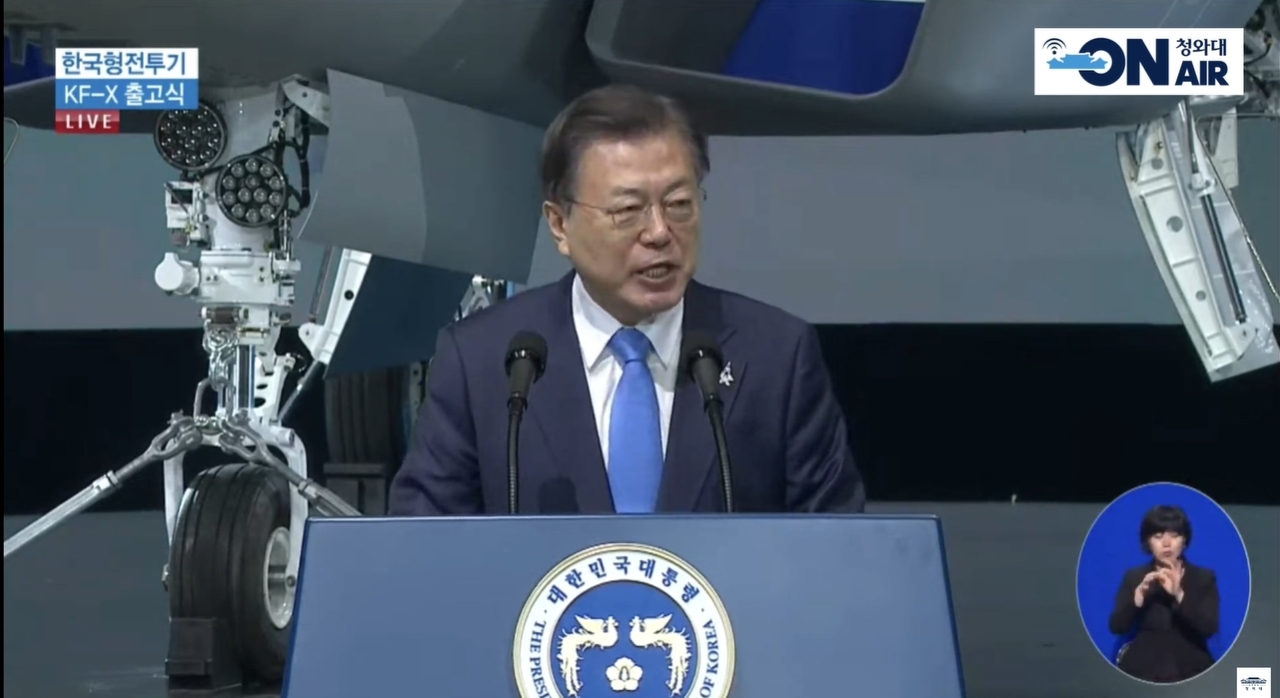 |
President Moon Jae-in delivers a congratulatory speech at the KF-21 Boramae rollout ceremony. (Cheong Wa Dae) |
“A Lockheed Martin manger looked at us and said that KAI needs twice as many staff to develop the KF-X project, but we said we can do it and we did,” Ryu said.
Due to its similar design with Lockheed Martin’s F-22 Raptor, the world’s most lethal fighter jet, KAI’s KF-21 Boramae is often nicknamed “Baby Raptor.” “Boramae” means baby hawk in Korean. The KF-21 label symbolizes Korea‘s determination to safeguard its airspace with its own fighter jet in the 21st century.
The maiden flight is scheduled for July next year after tests on the ground. Mass production will proceed when six prototypes complete 2,200 sorties over the next four years.
KF-21 not only holds symbolic significance but also has practical advantages.
The Air Force’s main KF-16 and F-15K fighter jets are all American-made and unstable parts supply had posed hiccups for operations. In the past five years, there were 535 and 548 cases in which the Air Force couldn’t scramble to put together F-15K and KF-16 fighters, respectively, due to lack of parts. The target ratio of localization of KF-21 is 65 percent.
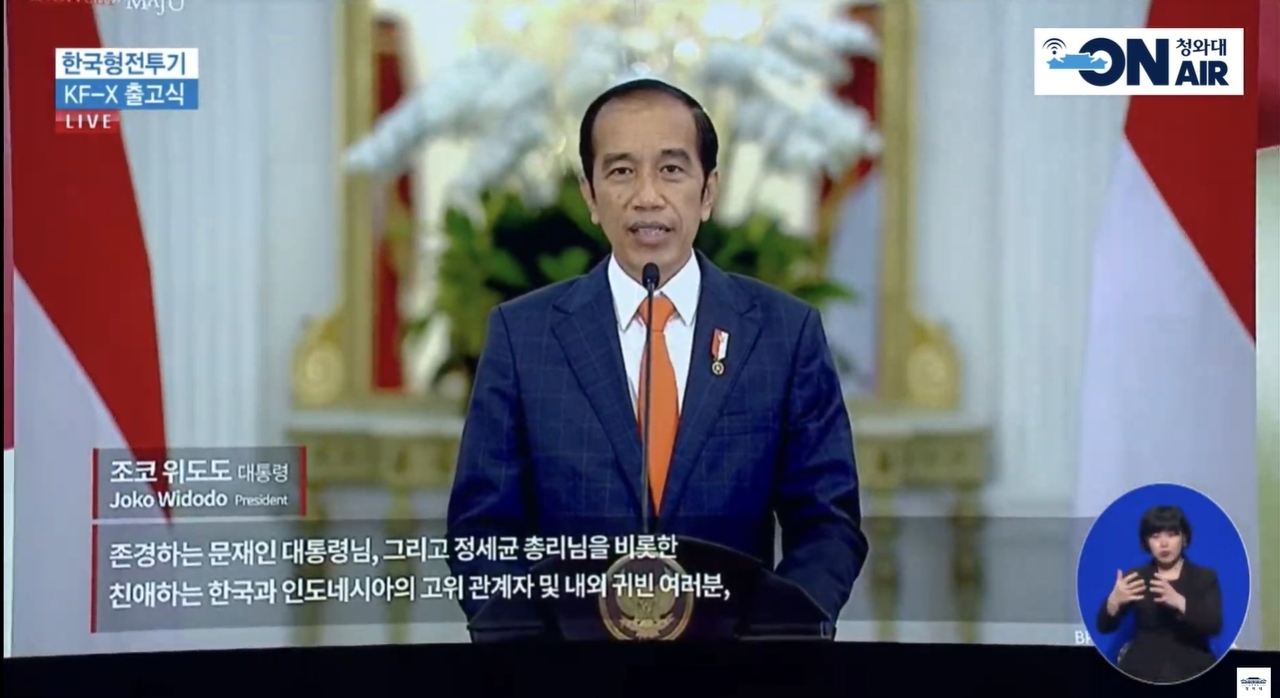 |
Indonesia President Joko Widodo delivers his congratulations for the rollout of the KF-21 in a video message. (Cheong Wa Dae) |
Another key advantage is the freedom of weapon choice. To load Korea-made missiles on F-15Ks, for example, the Air Force has to pay tens of millions of dollars to the US in the name of “weapons system integration.” Under this process, the Air Force has to disclose source codes of those missiles. The Air Force paid 80 billion won to mount Swedish-German Taurus missiles on the F-15K.
However, thanks to the independent platform of KF-21, the Air Force can now load Korean-made missiles without having to worry about extra installation fees.
The homegrown fighter has a total of 10 weapon stations, with three on each wing and four under the fuselage.
The Air Force has 120 KF-21s on order and plans to put them all into active service by 2032. The single-seat twin-engine fighter will replace Korea’s aging F-4D and F-5E fleet.
With price expected at $65 million per unit, KAI plans to export the midrange jets starting from 2028. KF-21 jets exhibit low operational costs and ease of maintenance, which would be key to successfully marketing the jet in Southeast Asia.
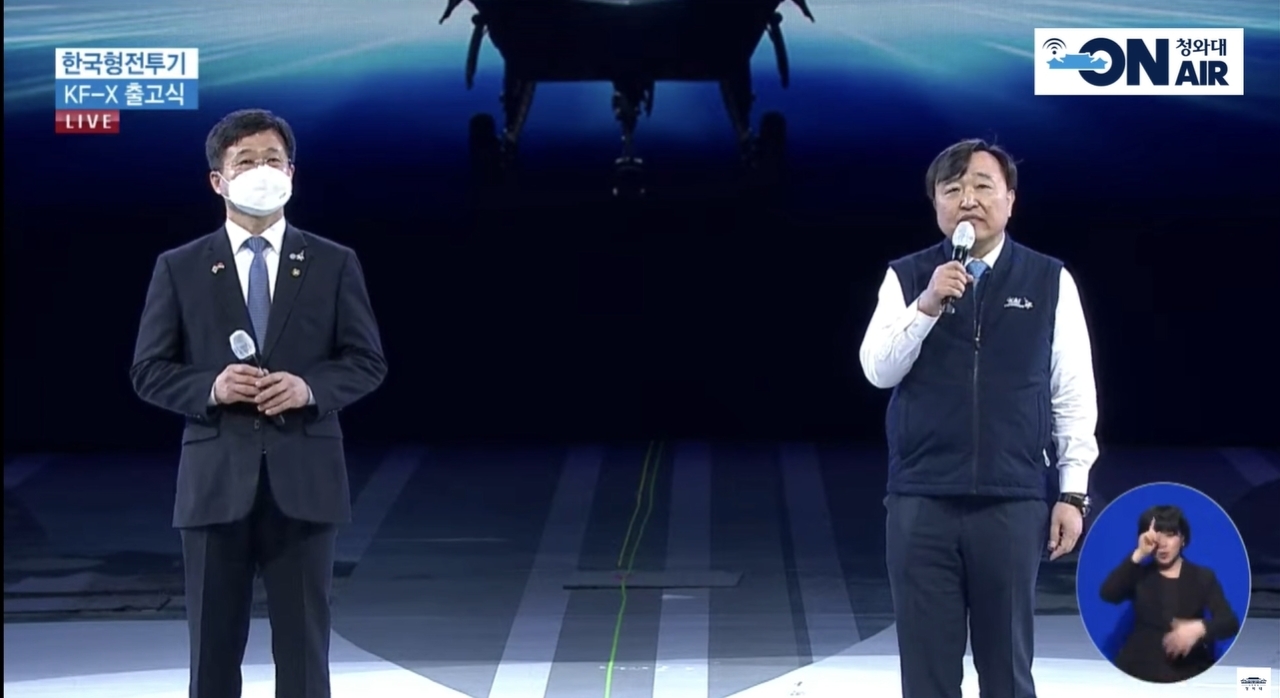 |
Korea Aerospace Industries CEO Ahn Hyun-ho (right) asks for support for the KF-21 at its rollout ceremony. (Cheong Wa Dae) |











![[Today’s K-pop] Blackpink’s Jennie, Lisa invited to Coachella as solo acts](http://res.heraldm.com/phpwas/restmb_idxmake.php?idx=644&simg=/content/image/2024/11/21/20241121050099_0.jpg)
